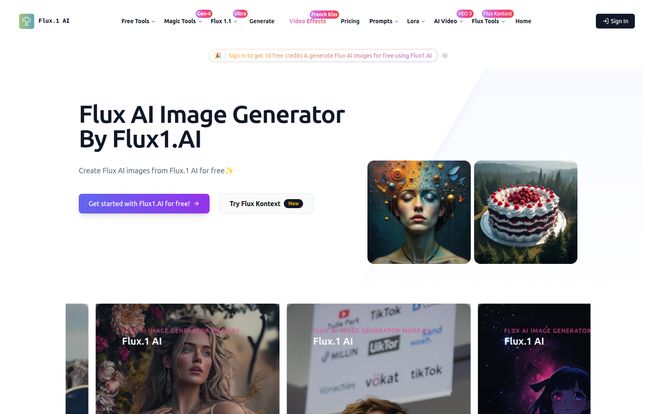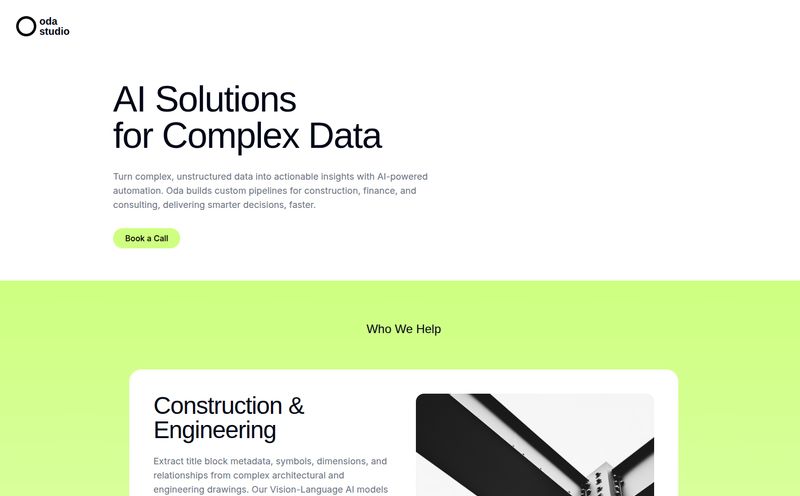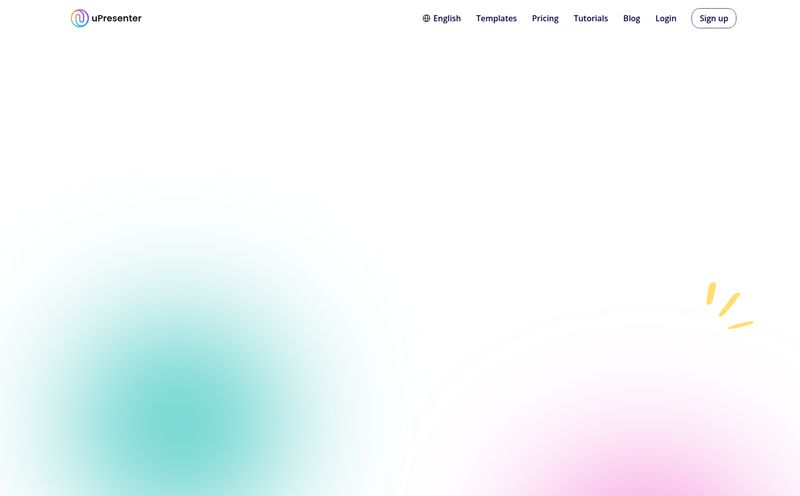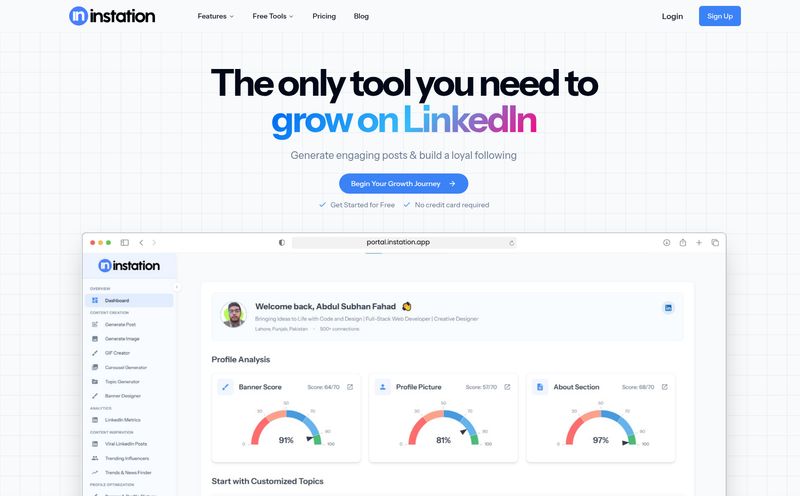It feels like a new AI image generator pops up every other Tuesday, right? Each one arrives with a shiny landing page, breathtaking examples, and a boatload of promises to be the next big thing since, well, the last big thing. It’s a bit of an AI art Gold Rush, and if you’re like me, you’re equal parts excited and exhausted by it all.
So, when Flux.1 started appearing on my radar, I had my usual reaction: a healthy dose of professional skepticism mixed with that kid-on-Christmas-morning curiosity. It’s the curse of being in the SEO and digital trends space; you have to check everything out. The question is, is Flux.1 just another flash in the pan, or does it actually have the chops to muscle its way into the ring with heavyweights like Midjourney and DALL-E 3?
I spent some time kicking the tires, and I’ve got some thoughts. Let's get into it.
A First Glance at Flux.1
Landing on the Flux.1 site, you're greeted with a clean, dark-mode interface and some pretty bold claims. We're talking “Revolutionary Text-to-Image Synthesis” and “Cutting-Edge Technology.” Standard marketing fare, sure, but the example images they showcase are genuinely impressive. They've got a mix of photorealism and artistic flair that definitely catches the eye.
The core promise is simple and familiar: you type in what you want to see, and the AI brings it to life. Their workflow is boiled down to a simple three-step process: Describe, Generate, Download. You can’t get much more straightforward than that. For anyone who’s ever felt overwhelmed by the complex settings in other platforms, this simplicity is a breath of fresh air.

Visit Janus Pro
The Good, The Bad, and The... Intriguing
The examples on the site give us a peek under the hood. There’s a prompt for a “photo of a young handsome blonde man giving a speech,” and the output looks crisp and believable. It's a good baseline test that it handles well. But then they throw a real curveball: “close-up picture of a manhole in a brick wall morphed into a habitat of a cell with a DNA strand inside it.”
Now that’s a prompt. It’s the kind of abstract, complex request that makes most AI models just throw up their digital hands and give you a weird, muddy blob. While the final image wasn't super clear on their site, the fact that they're even attempting to showcase this level of prompt understanding is a massive flex. For my money, this is where the real potential lies—in how well an AI can interpret nuance and creativity, not just spit out another perfect-looking avocado armchair.
Flux.1 in the Broader AI Ecosystem
It's impossible to look at a tool like Flux.1 in a vacuum. You have to place it in the context of the whole AI landscape. On one hand, you have these polished, user-friendly services like Flux.1 and Midjourney—the walled gardens of AI art. They're easy to access, reliable, and backed by a company.
On the other hand, you have the Wild West of open-source models. While digging around, I was looking at another tool, Janus Pro, which is a perfect example of this other world. It’s a powerful 7 billion parameter model built on the DeepSeek-LLM architecture, and it's freely available on Hugging Face for anyone to download and run themselves. It boasts about outperforming DALL-E 3 in certain benchmarks. Sounds amazing, right?
But here’s the trade-off. It’s a classic battle of convenience versus control.
| Aspect | Flux.1 (The Service) | Janus Pro (The Open-Source Model) |
|---|---|---|
| Ease of Use | Extremely high. Just sign up and type. | Requires technical skill, powerful hardware. |
| Cost | Free tier + Pro subscription for commercial use. | Free to use, but you pay in electricity and hardware costs. |
| Control & Customization | Limited to the platform's provided settings. | Nearly infinite. You can fine-tune the model itself. |
| Potential Limitations | Usage limits, potential watermarks on free plan. | Output can be limited (e.g., 384x384 resolution), speed depends entirely on your GPU. |
Neither approach is inherently better; they just serve different people. Flux.1 is for the creator who wants to get a great result, fast, without needing a degree in computer science. And that's a massive market.
Let's Talk Money... or Try To
The big question for any serious user: what’s it going to cost me? The Flux.1 FAQ makes it clear there's a free option and a "Pro" subscription. The Pro plan is what unlocks the right to use your creations for commercial purposes. This is the standard model, and it's a fair one.
But in a moment of true real-world research, when I went looking for a dedicated pricing page to get the nitty-gritty details... I hit a 404 error. Page not found. Classic. Happens to the best of us, but it does mean the exact pricing is a bit of a mystery for now. I'd expect it to be in the typical $10-$30/month range to stay competitive.
The Standout Feature That Could Be a Game-Changer
Beyond the quality of the images, one line on their features list jumped out at me: "Next-Generation Flux.1 AI Image Generator Extending to Text-to-Video."
Hold the phone. That's not just another feature; that's a statement of intent. The race for high-quality, accessible text-to-video is arguably the biggest story in AI right now. If Flux.AI can deliver on this promise and integrate a competent video generation tool into their easy-to-use platform, they won't just be a Midjourney competitor. They’ll be stepping into the ring with OpenAI's Sora and Pika Labs. That’s a bold, exciting move, and honestly, it’s the thing I'll be watching most closely.
So, Who Is This For?
After my initial dive, I think Flux.1 is positioning itself smartly. It seems perfect for:
- Content Creators & Marketers: People who need high-quality, unique visuals for blog posts, social media, or ads without a steep learning curve. The Pro plan for commercial use is built for them.
- Hobbyists & Casual Users: The free tier is a fantastic, no-risk way to play with powerful AI and create cool art for personal projects.
- Designers Looking for Inspiration: Sometimes you just need a spark. Typing a few concepts into Flux.1 could be a super-fast way to generate mood boards or initial ideas before firing up Photoshop.
Is it going to replace the hardcore AI artist who spends hours perfecting a prompt in their own custom-trained Stable Diffusion model? Probably not. But it doesn't have to. It's aiming for a different, and arguably much larger, audience.
The Final Verdict (For Now)
Flux.1 is a seriously promising new player in a very crowded field. It’s got the user-friendly interface, the impressive image quality, and a smart business model. It looks good, it's easy to use, and it seems to understand complex prompts better than many of its predecessors.
The real make-or-break factors will be the specifics of that Pro plan and, most importantly, whether they can deliver on that tantalizing text-to-video promise. If they nail that, we could be looking at a new go-to tool in our creative arsenal. For now, it has more than earned its spot on my watchlist. I'd say it's absolutely worth signing up for the free version and taking it for a spin.
Frequently Asked Questions about Flux.1
Is Flux.1 AI Image Generator actually free?
Yes, there is a free tier! You can sign up and start generating images without paying. However, for features like commercial usage rights, you’ll need to subscribe to their Pro plan. It's a pretty standard setup for tools like this.
What makes Flux.1 different from other AI art tools?
From what I can tell, its main strengths are a very high level of prompt understanding—even for weird, abstract ideas—and its extreme ease of use. Plus, the upcoming text-to-video feature could be a massive differentiator if they pull it off.
Can I use the images I make for my business?
Only if you're on the Pro subscription. The free version is typically for personal, non-commercial use. Always double-check the terms of service, but that's the industry standard.
How does Flux.1 compare to something like Midjourney or DALL-E 3?
It's definitely in the same league in terms of potential image quality. It might be even easier to get started with than Midjourney, which still has some quirks with its Discord-based interface. The final output quality is subjective, but Flux.1 is absolutely a strong contender.
What is this Text-to-Video feature I keep hearing about?
It's a feature that Flux.AI has announced is in development. It would allow you to type a description and generate a short video clip, much like how you currently generate images. This is cutting-edge stuff, and if it works well, it will be a huge deal.
Reference and Sources
- The official website for the tool discussed: Flux.AI
- For information on open-source AI models: Hugging Face
- A great resource for comparing text-to-video models: Forbes - AI Text-to-Video Generator Comparison



